-Webmaster
Early Aviation in Lincoln, Nebraska
Considered an early Midwestern hub of aviation efforts, Lincoln during the 1920s seemed destined to become a national center of aviation manufacturing and training. Lincoln Standard Airplane set up shop near 24th and "O" Streets while Arrow Airplane would open a facility in Havelock (today the former Goodyear manufacturing plant). Biplanes were even being constructed within the former Industrial Arts Building at the Nebraska State Fair Grounds. Yet as the Great Depression arrived, Lincoln could not hold on to its aviation manufacturing business. Instead Wichita, Kansas would become the focus of aviation manufacturing on the plains.
The area formerly known as Lincoln Air Force Base meanwhile began its life in 1928 when the city selected a 160 acre plot of land Northwest of the city for use as a municipal airport. The field sat on the edge of some of Lincoln's salt flats near Oak Creek and would consist of a grass runway, a brick terminal building with a raised control tower, and a hangar (soon to be occupied by Lincoln Aircraft and Flying School). Because of his history with the city, learning to fly here in 1922 at Nebraska Aircraft (later named the Lincoln Aircraft and Flying School), it was to be named after a young Charles Lindbergh, noted for his famous solo flight across the Atlantic in 1927.
Lincoln became an air mail stop during 1928 and had become a United Airlines stop during 1927, the airline continues flight service to Lincoln to this day. A number of airfields sprang up in the capital city during this time, including Page Field (near present day Lincoln Memorial Cemetery), Union Airport, and later Arrow Airport but Lincoln Municipal was to serve on in a greater capacity.
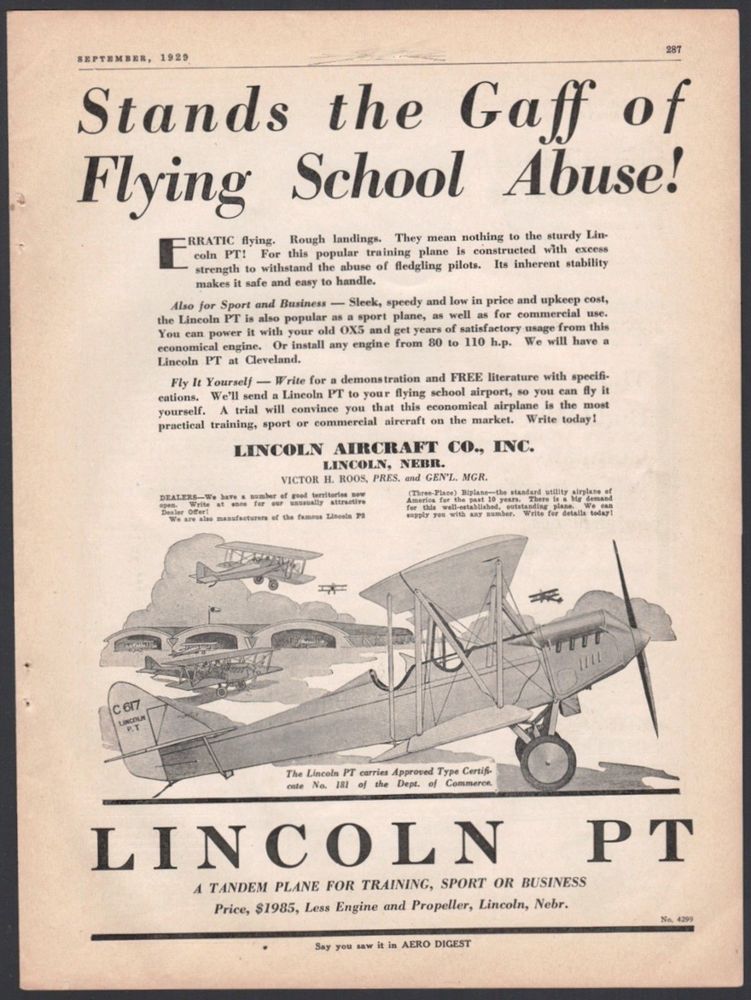
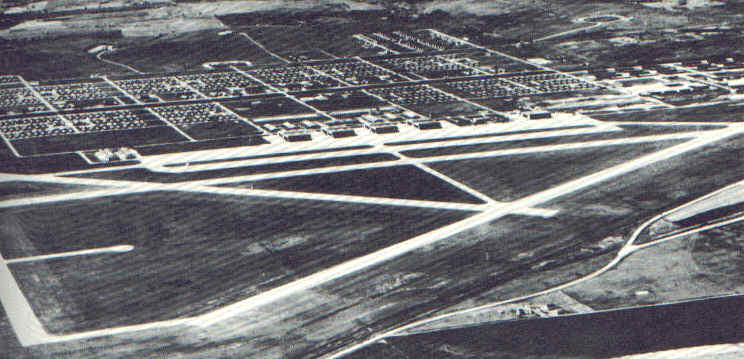

WORLD WAR II
Even before the outbreak of World War II on September 1st, 1939, The United States Army began surveying sites for army air fields to train and equip airmen before they were sent overseas. Army officers began to search the Lincoln area during 1941 to build a mechanics school. The Pearl Harbor attack increased the need for personnel dramatically and on February 27th 1942 Lincoln was announced to be home of an Army Air Field. The politics of building a base was largely settled over the course of a weekend. The first students arrived in June and during the course of less than five months, Lincoln Army Air Field rose out of the fields, becoming a fully functional albeit temporary base.
Lincoln AAF was one of few continental aircraft engine mechanics school (in fact tens of thousands of fighter mechanics trained here) but also later trained air crews in the heavy bombers of the period such as the B-17 and B-24. Lincoln was only one of 12 Army Air Fields around the state of Nebraska at the time. Alliance, Scribner, Scottsbluff, Offutt, Harvard, Fairmont, Bruning, McCook, Ainsworth, Kearney and Grand Island all trained airmen during World War II. In fact elements of the 509th Composite Group, the unit that dropped the atomic bombs on Japan, were made up from some airmen trained at Fairmont and received new-build B-29s from the Martin bomber plant in Omaha.
Meanwhile at Lincoln, a hospital, barracks, mess halls, hangars and an extensive air field were built very quickly. Many of the barracks were merely made of tar-paper. At the insistence of first-lady Eleanor Roosevelt , chapels were constructed at all new airfields. Today the Lincoln chapel is on the register of historic places and still resides Northwest of Air Park. After the demolition of the two remaining world war II vintage warehouses, the chapel is the last World War II era structure there.
In 1945 , the war was ending and airmen returned home. Lincoln AAF began ending its training efforts and became a homecoming transfer base for crews returning from Europe. Immediately after war's end, Lincoln was closed along with most other fields in the state (With the exception of Offutt, Kearney and Grand Island). The last month of operations was December 1945 and the runways quickly became quiet.
1946-1950
The silence did not last as the newly formed Nebraska Air National Guard moved into the former grounds along with a Naval Reserve unit. The 173rd Fighter Squadron was equipped with P-51 Mustang fighters in 1946 and were in fact the second air national guard unit established in the United States. A few years later, F-80C Shooting-Star jet fighters would replace the F-51s (Renamed from Pursuit to fighter) until the advent of the Korean War. The Naval Air Reserve meanwhile was soon equipped with P-2 Neptune maritime patrol aircraft and F4U Corsair fighters.
The former base hospital for Lincoln Army Air Field was soon converted to housing after the war. This plot of land along with its buildings soon became Huskerville, a small town primarily consisting of married university students who attended the University of Nebraska. The small area contained a grocer, theater and many apartments. Predecessors to today's Lincoln Housing Authority later took possession. Perhaps the most infamous tale of Huskerville was the Polio outbreak there in 1952 leaving 2 dead and 31 paralyzed. It provided a case study for those working to abolish the disease, immunizations would be created only a few years later.
Back in 1946, the Strategic Air Command was organized with the task of managing American bomber forces and the new nuclear deterrent that the nation monopolized. In 1948, SAC moved to Offutt AFB near Omaha, Nebraska to set up its official headquarters. The command, consisting of a few hundred B-29 bombers and many support types, was a skeleton fleet dwarfed by the huge numbers that served during World War II. If America would have a nuclear deterrent, SAC forces would have to become a larger, better equipped and trained fighting force.
1948 saw the first flare-ups of the Cold War in Czechoslovakia and the Berlin Blockade. Only an American/British airlift secured the city from falling into Communist hands. The next year however, the Soviets detonated their first nuclear bomb and the Cold War threatened to get hot. SAC began its re-activation of old Army Air Fields and began flying new advanced bombers. The B-36 and the B-50 (a new version of the B-29) were perhaps the pinnacles of propeller-driven bomber designs but were simply outdated by this time. A radical new design named the B-47 would soon dominate the American bomber arsenal. The first jet bomber to be deployed in numbers, its swept-back wings and sleek design allowed for high-speed and maneuverability. Barrel rolls and loops were achievable by the bomber and actually could out-run contemporary fighters of the period. B-29 crews were in awe of this sleek new jet, later to become the predecessor for most modern airliners.
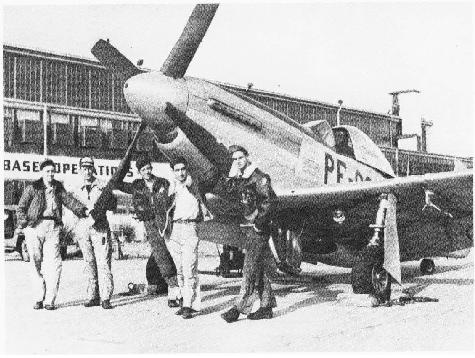
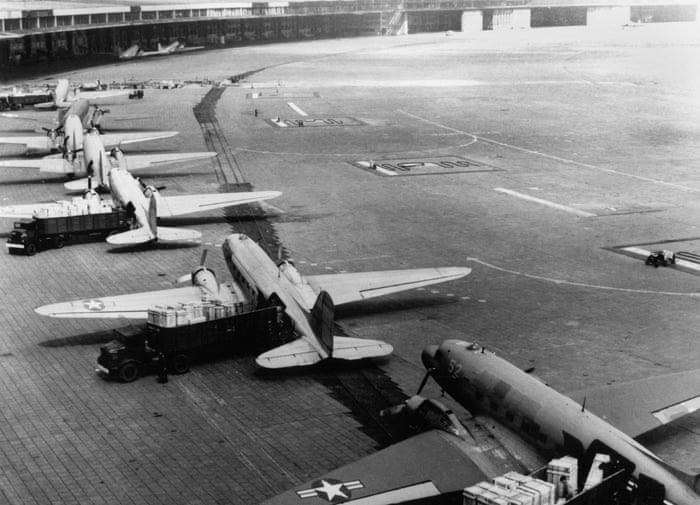
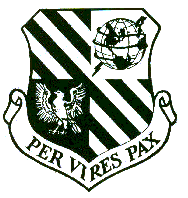
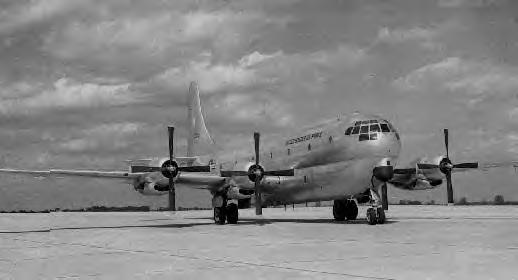
THE EARLY DAYS OF LAFB
On June 25th, 1950, North Korea invaded South Korea. This, as well as with events in China and the Soviet Union, sparked an American military build-up. This also begins the story of Cold War Lincoln Air Force Base. By January 1951 the Air Force was considering use of the former World War II airfield for Strategic Air Command, itself a newcomer to Offutt AFB in Omaha only a few short years before. The Lincoln Chamber of Commerce pursued re-activation vigorously and soon found a voice in Nebraska senator Kenneth Wherry who in turn fought for activation. By January 1952 the bill authorizing funds for Lincoln Air Force Base was thought assured until wording disappeared from the congressional appropriation bill. Only an envoy of Lincoln residents and its mayor were between re-activation and failure, lobbying only hours before the vote. In June 1952 the bill passed and by October the Air Force put reactivation into high gear. The 4120th Air Base Group had been operating with a small staff since February 21, 1952 and now oversaw the activation.
The city of Lincoln desired the return of the base so eagerly that they re-channeled Oak Creek around the needed lengthened runway to support jet bombers. Curtis E. LeMay, commander of SAC and aviation legend, demanded that SAC control the entire field. Initially the Air National Guard and Naval Air Station were located alongside the new Air Force units but were promised to move. Construction began across the field for new facilities needed to house the Air National Guard and Naval Reserve units and were generally complete by 1956.
Construction included new barracks for the airmen, mess halls, road improvements, recreation facilities, warehouses, weapons bunkers, and expanded operations buildings. Two giant hangars were built at the cost of $1 million each and concrete bunkers were built to house the powerful weapons that would soon make Lincoln AFB home. The amount of concrete used for the apron and runways at Lincoln would amount to the largest concrete project in state's history. Construction on other parts of the base continued for many years into the late 1950's depending on funds available. Post-1956 construction emphasized recreation or housing generally.
On February 1st 1954, Lincoln AFB was officially activated as was the 98th Air Base Group (recently of Fairchild AFB in Washington state), in charge of running the field. The 98th Air Refueling Squadron was its first aircraft unit, arriving from Kansas the same month. The first major aircraft, a KC-97, made its appearance in Lincoln during April. During July, the 98th Bomb Wing arrived from Davis-Monthan AFB where it had disposed of its war-wary B-29 bombers from Japan where it served during the Korean War. Later in January 1955, the main body of the 307th Bomb Wing had also arrived from Okinawa also after the unit's action over Korea (They had been the last active B-29 group in the USAF). In November 1954, the 98th Air Base Group was de-activated in favor of the 818th Air Base Group. The 818th Air Division took over control of the base during the month and assumed responsibility over the 307th and 98th Bomb Wings, their respective Air-Refueling Squadrons and the entirety of Lincoln Air Force Base. Jurisdiction also moved that month from the 15th to the famous 8th Air Force.
Other elements at the base that were activated during the period were the Field Maintenance Squadrons, Periodic (later Organizational) Maintenance Squadrons, Armament and Electronic Squadrons, Headquarters Squadrons, a Material (Supply) Squadron, a Motor Vehicle (Transportation) Squadron, an Air Police (Combat Defense) Squadron, an Civil Engineering (Installations) Squadron, a Food Services (Services) Squadron, a medical section, an Air Depot (Munitions Maintenance) Squadron as well as air-traffic control and air transport detachments. These units would work concurrently to help maintain a critical portion of America's nuclear deterrent.
MAJOR OPERATIONS
On December 7th 1954, the first B-47 Stratojet landed at Lincoln fresh from the Boeing Wichita, Kansas factory. The 98th Bomb Wing would become combat-ready in April of 1955 and the 307th by June as they received their (sometimes second-hand) B-47s. The world-wide "Force for Peace" mission began, otherwise known as nuclear deterrence although this fact was not well known to the public. 90 B-47 bombers would soon line the concrete aprons of Lincoln AFB.
The Air Base was a city in its own right (actually becoming later the 5th largest town in Nebraska). Everything from a barber shop to a credit union to a dental clinic made the base largely self-sustaining. Swimming pools, a gym, tennis courts, baseball fields and clubs soon made their presence felt as well. Bowling Lake was constructed in 1958 using (what has been ironically gestured by veterans as) volunteer time of airmen and officers. The lake was dug on the Northwest side of the base and was known for its fishing qualities and boating events.
Housing was short in Lincoln proper, and between 1956 and 1958 1,000 units of Air Force duplex, apartment and standard houses were built West of Northwest 48th Street. A school, Arnold Elementary was also built, even then operated by Lincoln Public Schools. Older children tended to go to school at Whittier Junior High and then Lincoln High School. It should be said that airmen also found homes inside of Lincoln, especially the Belmont neighborhood of Northwestern Lincoln.
From 1955 through 1964, a considerable number of accidents occurred at the base (but also nationwide), primarily with the B-47 jet bomber. Fatal crashes occurred near Ceresco and near Raymond during 1955 and 1956. Bowling Lake was named for Captain Russell Bowling who commanded a B-47 that careened off the runway at RAF Lakenheath in England and into a nuclear weapons core storage bunker. The Strategic Air Command pursued upgrades to the B-47 into the late 1950s, however, an air frame built for high-altitude bombing was becoming stressed by low-level flying.
Throughout the 1950's, Lincoln became a major Strategic Air Command base and a very powerful asset to American strategic forces. Its B-47 complement would number above 100 at times before 1965 and news of missile deployment assured the area in 1958 that the base would be there long into the future. KC-97 tankers meanwhile stood a less famous mission but nonetheless made the B-47 medium bomber into a strategic one. The 20 aircraft of each squadron provided support with its dual transport/refueling role. By 1959, an "Alert Force" concept came to dominate SAC's bomber operations in the face of the 1957 Sputnik incident and the now shortened warning time of a Soviet attack. The same year, 2nd Air Force assumed jurisdiction over the base and the naming of several units would change from 1958 into 1962. Strategic missiles coming into the mix would cause institutional changes themselves. Lincoln Air Force Base would move into the 1960's a very large and strong strategic American air base.
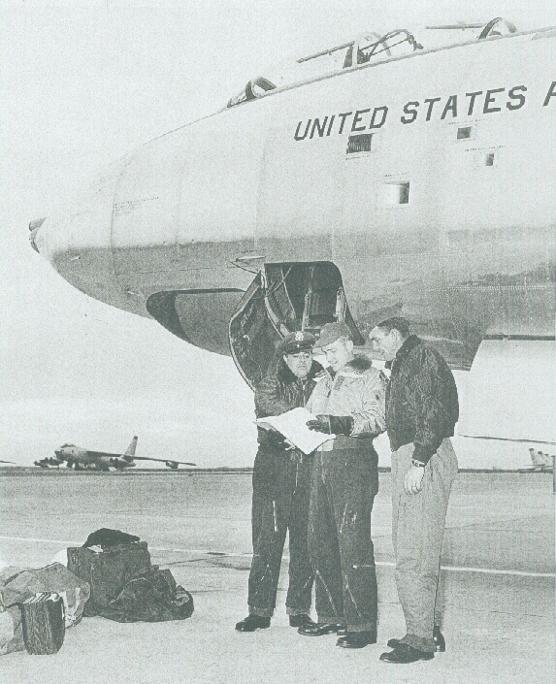
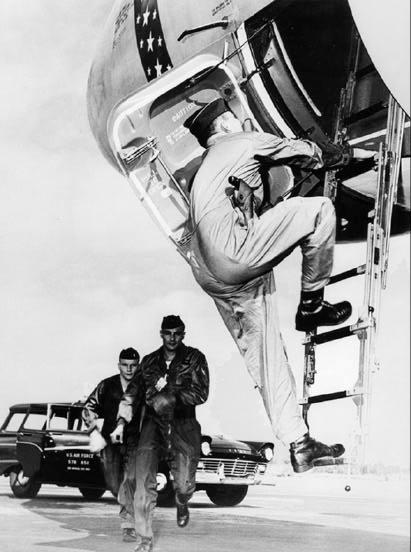
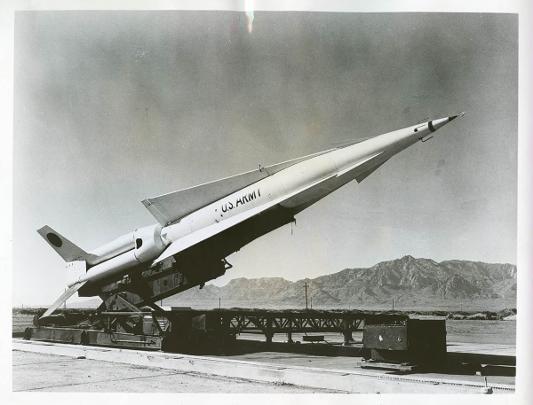
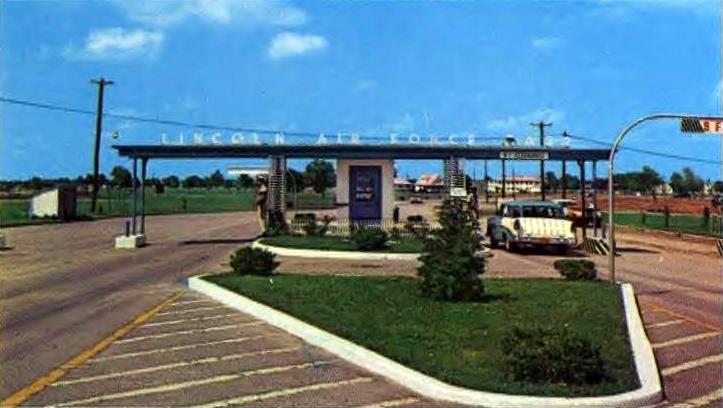
ZENITH
During 1960, the 307th Air Refueling Squadron was re-deployed from Lincoln to Michigan, leaving the 98th Air Refueling Squadron to remain as Lincoln's only tanker asset. Deployments for that squadron soon found it in forward bases the north of Canada at Churchill Air Base, Manitoba or Lajes Air Base in the Azores. Other new missions arrived however, starting with the deployment of Army Nike-Hercules Surface-to-Air missiles sites around Southeastern Nebraska. One site was located near Davey, Nebraska and another near Crete, Nebraska, with the other two sites defending the Offutt defense area. The supersonic, nuclear defensive missiles were deployed in 12 at each site. The 6th Missile Battalion, 43rd Artillery controlled the sites and remained until June 1966.
1960 also saw the start of Atlas-F missile silo construction. 12 silos were placed near Eagle, Elmwood, Avoca, Nebraska City, Palmyra, Tecumseh, Cortland, Beatrice, Wilber, York, Seward and Brainard. After a difficult construction, the sites were soon operational during September 1962 under the 551st Strategic Missile Squadron. The massive ICBM contained a 3 megaton warhead and had the range to strike targets in the Soviet Union. A five man crew watched over the missile 24 hours a day, 7 days a week, waiting for the call to raise the missile out of its protective silo and to launch it at a predetermined target. The Cuban Missile Crisis pushed crews and the missiles to the limit, and throughout its life the Atlas was a struggle to maintain on alert.
Due to the ongoing threat posed by Soviet ICBMs, the Air Force began to develop a rapid-response alert program aimed at dispersing B-47 bombers. Under Operation "Clutch Pedal", Lincoln B-47s could be sent to civilian airfields in order to launch more quickly under wartime conditions. In addition, Operation "Reflex Action" regularly posted Lincoln B-47s in England and Spain for quick-reaction alert to strike Soviet targets if necessary.
In October 1962, during the Cuban Missile Crisis, Lincoln activated "Clutch Pedal" for the first and only time, also preparing its very new missile force out of the ground on alert. The Army Nike missile sites also went on alert. Tense moments arose but the crisis ended without major confrontation. This was the peak of Lincoln Air Force Base's time of deterrence during the middle of the 20th century.
1962 also saw the beginnings of the 4362nd Support Squadron (later changed to Post-Attack Command and Control Squadron or PACCS) where B-47 bombers were converted to serve as communication relay aircraft in the event of nuclear war. The 4362nd came under 307th control, soon however, EC-135 aircraft strategically located replaced the EB-47Ls by December 1964.
During the two years following the Cuban crisis, Lincoln's trend towards obsolescence continued with the last KC-97 tanker of the 98th Air Refueling Squadron leaving the base in 1963. It was hoped that the Atlas-F mission at Lincoln would sustain the base until at least 1968, however it was announced in November 1964 that Lincoln would no longer be needed. It was be included in long list of base closings nationwide during 1965-66.
The community of Lincoln wrung its hands as the Air Force had decided to close an installation very important to the economic lifeblood of the city. While numbers had declined by 1964, in early 1962 Lincoln Air Force Base's population stood at 7,000 persons. Annual payroll stood at $26.6 million.
CLOSURE
On March 25, 1965, the 307th Bomb Wing was deactivated, as was the 818th Strategic Aerospace Division (the name changed after 551st SMS assigned). The sole major component of Lincoln was once again the 98th Strategic Aerospace Wing, its name having changed with the 551st SMS transferring to their control in 1964.
Even the relatively new Atlas-F missile could not escape deactivation and was pulled from silos during April 1965. The 551st Strategic Missile Squadron was the last Atlas (and first-generation ICBM) unit in the United States to have missiles on alert and was it effectively replaced by the solid-fueled and more numerous Minuteman missile.
December 7th, 1965, 11 years to the day the B-47 first landed in Lincoln, the last 3 of the 98th SAW took-off into the Lincoln skies never to return. The 98th lingered on at a now quieter Lincoln Air Force Base until June 25th, 1966 when the base officially closed. The two Nike missile batteries stood down the same day, the last major weapon systems to be stationed near Lincoln AFB. Care taking hereafter controlled by the 4255th Air Base Squadron and the end of major Air Force involvement in Lincoln. On January 3, 1967 the active Air Force departed Lincoln, although the Air National Guard remains to this day.
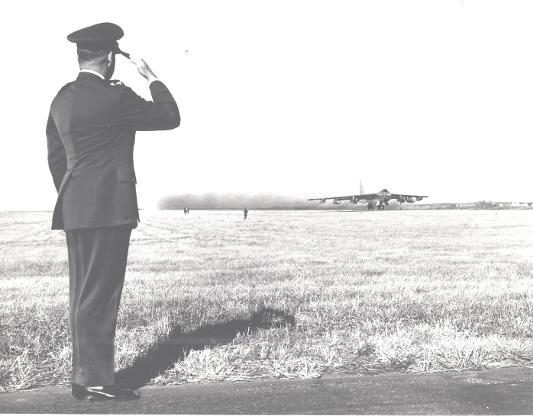
After The Air Force
On any particular Sunday at Air Park, a key word is silence. The skies are no longer filled with the thunder of jets sailing gracefully, though noisily, through the air. There is no more backed up traffic at the base gates, traffic has decreased considerably however Air Park has emerged from the 1960s to provide housing and work for the citizens of Lincoln.
Lincoln Air Force Base during its day was once said to be one of the most critical SAC bases in the United States. It also was home to many airmen and provided an economic powerhouse to the city of Lincoln. Today it largely goes unnoticed by the passer-by as little sign of a Cold War installation existed here. Signs of its history pass every day into history as are the stories told by its veterans. As the Cold War was a potentially dangerous conflict, for never before a single war threatened to extinguish life on earth, it would not be a stretch to state that it should not be forgotten.
And a proud element of SAC in Nebraska was Lincoln, contributing so much to local and international history. SAC HQ in Omaha may of been the location of the so-called big red button, but Lincoln was a massive force behind it.